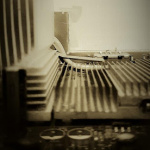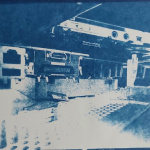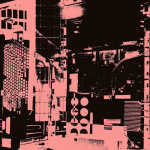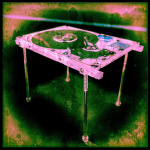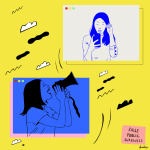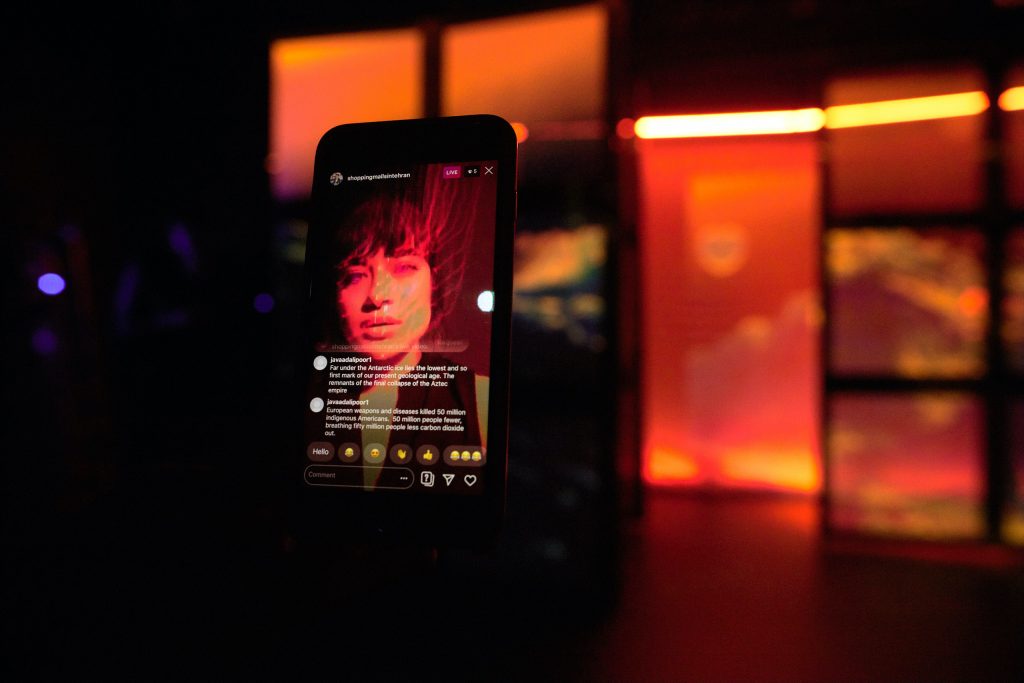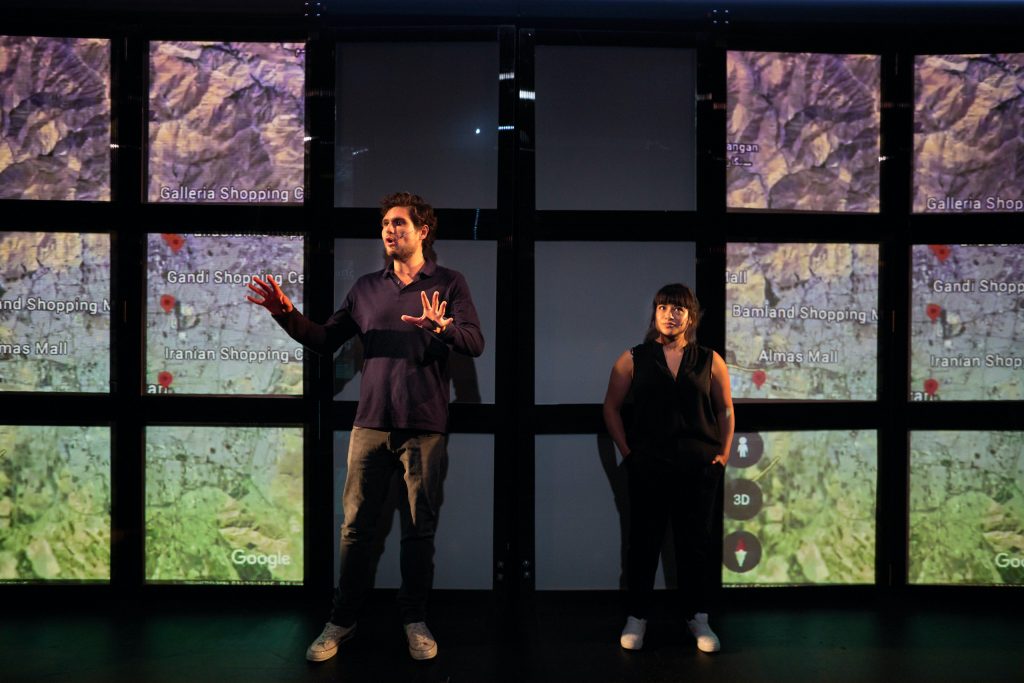On March 20 2020, Boris Johnson told all nightclubs, theatres, and cinemas to close “as soon as possible”. Six days later, lockdown came into effect across the UK. Thousands of events were cancelled, and the shutters came down on live performance – from huge outdoor events like Download Festival and Notting Hill Carnival, to tiny DIY gigs and theatre runs. At the time of writing, a return to ‘normal’ programming remains a distant and speculative prospect, meaning our experiences of live performance will be mediated through technology for the foreseeable future. So how are individuals and organisations adapting and evolving? Can technologically mediated live events save an industry from collapse? Are there any silver linings or is this a cultural apocalypse?
Music venues, theatre and festivals developed online live streams: bagpipers in bedrooms on live YouTube channels like Quarantunes, and entire theatre festivals streaming weeks of content. National theatres screened recordings and new productions emerged, such as 14/48, a ‘speed theatre festival’, developed at breakneck pace in collaboration with Attenborough Arts Centre at the University of Leicester in the UK: 34 plays were produced in 24 hours or less. However, the move to present work online is not a future-proof model.
The Music Venue Trust (MVT) has 928 members and counting, and represents grassroots music venues across the UK. They recently surveyed members and found just 168 venues to be delivering regular streaming. Of these, 52% had never done any streaming pre-COVID-19, with an additional 27% having never offered this on a regular basis. Only 34 venues had some sort of streaming that predated the pandemic. The MVT is now looking at establishing a collaborative platform so members and artists can collectively promote and market their online events, and in the months to come. CEO Mark Davyd expects the numbers of venues offering streaming to grow.
However, the economic model for these online events is dire (there is no comparable data for theatres yet).
“It just doesn’t work,” says Davyd. “We’re unsure how to resolve it, but I will say there’s not much new in this crisis, it’s just putting a magnifying glass over things that were already a problem. In the last 20 years it has become increasingly difficult to sell tickets to see an unknown or breaking artist. If you ask us to take that model online, the same applies. Engagement stats we’ve seen are very low as well – on average people are engaging with a stream for 10-15 minutes.”
“In the last 20 years it has become increasingly difficult to sell tickets to see an unknown or breaking artist”
While musicians might be able to sell music and merchandise to plug a gap, there is an entire sector of workers around theatre and music events who do not have this option, from touring crew to set designers. Entertainment union Bectu estimates that 7,442 theatre and live events workers have been made redundant as a result of COVID-19, and many in this sector do not qualify for any support, meaning the workforce for staged performances post-pandemic may look very different.
In terms of how much people are prepared to pay for a show, the MVT’s findings are catastrophic, and there is a minefield to be cleared regarding rights and royalties for different sorts of streams. “The worrying thing is how much musicians rely on live music earnings as what props up their careers,” Davyd explains. “We’ve seen streaming attack their recording careers, so if the same happened to live [events] we’re not sure it could be a viable business at all.”
Davyd does point out that this doesn’t apply to dramatic one-off productions like Nick Cave’s cinematic Alexandra Palace show, or Ellie Goulding’s The Brightest Blue Experience pay-per-view concert; but these events point to the fact that not all live streams are created equal. There are myriad creative possibilities in how technology can mediate live events, with the potential to unlock new creative and technological applications. However, they are unlikely to replace in-person events.
Audience enthusiasm for attending events in person remains high – 93% of respondents to a Society of London Theatre survey said they were looking forward to returning to theatres once they reopen.
In the meantime, while some plays were simply broadcast without audiences, and bands played to a webcam, other productions have integrated technology into their productions. Kieran Hurley’s Bubble, a play set entirely on Facebook, uses a cast of European actors who have rehearsed exclusively over Skype, and was filmed using their own cameras.
Theatre maker Javaad Alipoor has been integrating digital spaces into theatre performances for years, notably with the first two in a trilogy he has made with collaborator and co-director Kirsty Housley. The Believers Are But Brothers is about online radicalisation of young men into the alt-right, and Rich Kids is a play about entitlement and consumption in Iranian society. Both ask audience members to leave their phones on and integrate social media such as Instagram and Whatsapp. “Technology is part of the narrative,” he explains, and from an artistic perspective, he says it’s about wanting form to follow story.
However, Alipoor’s plays were not COVID-19-ready by dint of their smartphone integrations, although he was able to adapt them. Rich Kids was staged online at Traverse Theatre in Edinburgh, Scotland, and Alipoor developed an interactive film version of The Believers Are But Brothers for Copenhagen International Documentary Festival, which was also shown through HOME in Manchester. They will still require you to leave your phone on. “We thought, it cannot be beyond the ken of humankind to have a Whatsapp group with a load of people who’ve never met each other before,” Alipoor says. “It has an extra creepiness that the in-person version didn’t have.”
He says a lot of the audience feedback from initial shows was from people saying they’d just made peace with lockdown, but the play gave them another understanding of how such isolation might be exploited.
“What we do is a certain kind of immersion theatre,” he says. “It’s not a fashionable thing to say, because we’ve just had the first generation of immersive theatre from companies like Punch Drunk, which was about building a fantastic fantasy world that’s not real and costs loads of money. Our second generation model of immersion is about making you feel complicit in the things you already are immersed in. If that first generation is like prog rock, we’re now making punk.”
Despite these digital elements, Alipoor’s shows were still built around an audience getting together in a room, so the real world and the social networks could rub up against one another: “This trilogy of shows are specifically about that relationship between social media, contemporary politics and the nature of the human soul, but you can only really profoundly explore that connection between people when you’re in a space where there’s another kind of connection between them.”
Creating engaging events mediated by technology for the future is not about trying to replicate an in-person environment or event online, but to reimagine what an event could be from a very different starting point.
Thomas Blackburn, an AV artist and programmer who works across international and DIY productions, says: “What’s exciting from a creative perspective is thinking about the possibilities if we forget about re-creating a live event experience, and how many more people are thinking in those terms since the pandemic. So rather than a performer in front of a webcam, let’s see if we can make a real-time piece of audio-visual art, for example.”
Unfortunately, we’re still in a place where the delivery formats for anything other than straight up video streaming aren’t standardised and ubiquitous enough to reach a wide audience – this is the same issue that’s holding VR development back. Blackburn points to virtual production in filmmaking – which was most notably used for the James Cameron film Avatar – as one area where film techniques might cross over into other forms of live performance such as theatre and music.
However, due to the limitations of visuals that Blackburn points to, some people have done away with visuals of a live performance completely. During lockdown, Oda launched in the US: a set of custom-built speakers and live music programme that aims to bring music into the home without requiring more screen time.
Venues like Boiler Shop in Newcastle upon Tyne are also looking past live streams into more digitally-connected concepts to future-proof their physical spaces. Richard Clouston, founder, curator and CEO, says: “I’m confident that the common methods of enjoying live and DJ’d music will return, but we know not when. In the meantime we’ll adapt and create other possibilities.” A 2018 multichannel audio-visual installation by Chris Watson they commissioned had both “fired the imagination of attendees” and “primed us as curators to develop immersive programming to harness emerging digital technologies of light and sound.”
Mena Fombo and Michael Jenkins are in the process of starting the first Black-owned cultural space in Bristol’s harbour. Currently operating under the name Bristol African Caribbean Cultural Space (likely to be renamed for launch), they are in the process of securing a barge and moorings. When COVID-19 hit, Jenkins says they changed their plans to expand their digital outputs and access, adding online access and remote events from day one. Michael describes the space as “history meets afrofuturism”, and they intend to build a technology lab where AR and VR will be used so that Black artists can develop and enhance their practices. “We want to weave it all together,” he says, “having a space and thinking forward is all about looking to the future – but you have to understand the past. We want to contextualise Bristol’s history and its role in the slave trade, but then take that knowledge, take that information, and move forward with it.”
Music festival WOMAD focused solely on sonic adventures for their WOMAD At Home series of immersive audio streams. These recordings are fully surround-sound, using recording devices such as a Neumann binaural head, and Sennheiser’s AMBEO Smart Headset, as well as a 360-degree soundsystem. Musicians have used these capabilities to take listeners on journeys: Onipa moved their afrofuturist grooves through different studio spaces, and avant-folkies 9Bach devised a journey through rural North Wales, playing in disused chapels and even from behind a waterfall. “We wanted to try something different,” explains Mike Large, Operations Director at Real World, the company behind WOMAD festival who also own recording studios.
Large continues: “You’re at home, you’re spending eight hours a day looking at a screen, so we wanted to get you to turn it off and fill the gaps with your imagination. We will continue to do more immersive work regardless of what happens, because we really enjoy it, and it does feel like there’s a drift towards this sort of tech, like the head tracking that’s now in AirPod Pro headphones.”
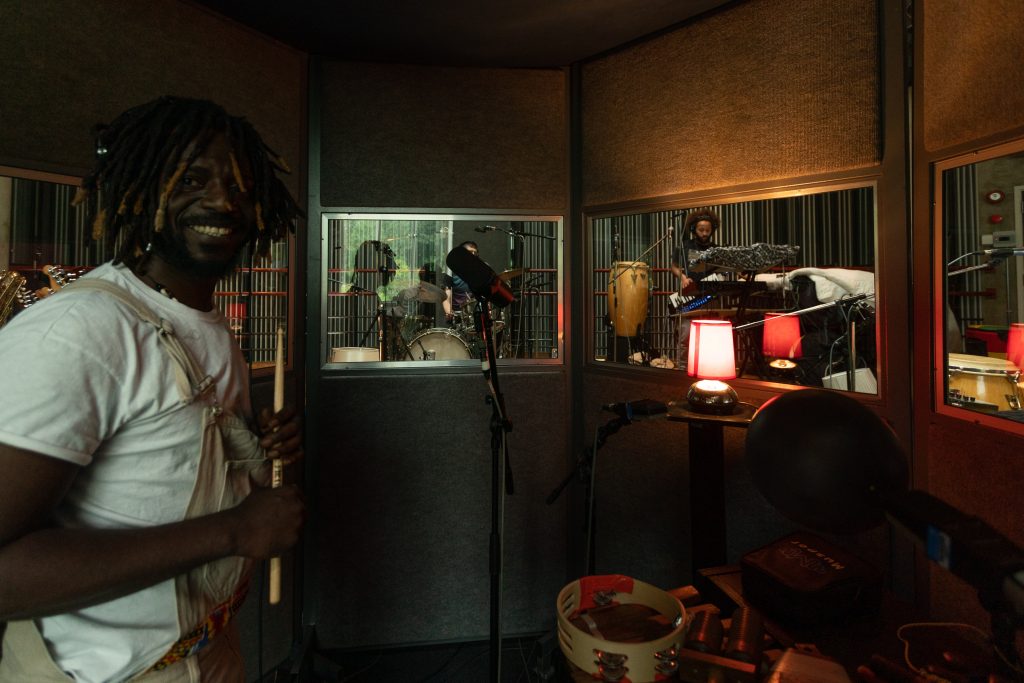
Onipa, part of WOMAD at Home. Photo credit: York Tillyer
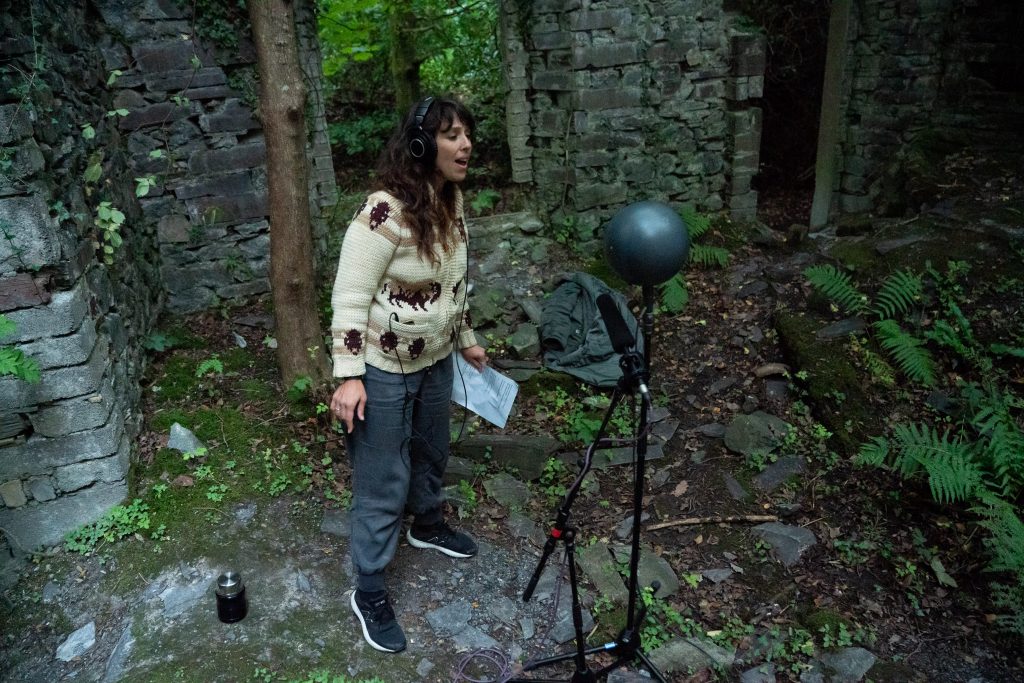
9Bach, part of WOMAD at Home. Photo credit: York Tillyer
Large says they are also starting to see various hybrid ways of working in the studio, whether that’s splitting in-person mixing and remote e-mixing, or recording live events or sessions for broadcasts while a band is making an album. During the weekend of the cancelled UK edition of WOMAD, they also resisted an ad hoc remote festival; instead running a community-focused celebration of past festivals. They posted archive footage, including restored video tapes dating from as far as 1982 that had never been seen, and encouraged people to engage on social networks.
The last live show by multimedia artist Natalie Sharp (aka Lone Taxidermist) was of her work BodyVice, a performance piece about her chronic pain that involves the sound of MRI scanners, synthesisers built into anatomical models of spines, film, lighting, and costumes – including an illuminated nervous system whose coils are handed out to the audience. With such tactile elements, a performance is now impossible; added to which the multi-sensory element of her work doesn’t easily translate to a standard live stream. So instead of performing to webcam, she decided to teach herself filmmaking to be able to show new work Marra! for Aerial festival in the Lake District. She doesn’t think she’s the only one levelling up: “Post-Covid there’s going to be a shift in how people communicate their artwork. Musicians are becoming filmmakers, for example. People are having to really think about presenting things visually, rather than just having a band playing in a room.”

Marra!, a multi-sensory musical performance by Lone Taxidermist
Accessibility is one of the few silver linings of COVID-19’s effect on live events, whether it’s in socially distanced gigs that mean issues around safety and accessibility are finally overcome for some audience members, or through making live events accessible remotely to those who couldn’t participate previously. Sharp’s chronic pain means she can’t attend live shows if she can’t guarantee she will be able to sit down, which has often stopped her attending events. While she said she hasn’t enjoyed watching livestreams from home, socially distanced events have finally levelled the playing field: “When I went to a socially distanced gig we all had to be seated and on chairs, and I felt like everyone was equal.”
Many of the changes that have happened are ones that users had been requesting for years, and now the infrastructure has sprung up, it’s unlikely to come down. Emma Rice’s theatre company Wise Children recently committed to incorporating live broadcasts into all its future programming, for example. For some, the speed of this adaptation – once it was required by non-disabled people – is deeply frustrating, and only confirms that it has been possible all along but was not a priority. “I have more access now, but I’m also more angry,” says Grace Quantock, a writer, wellness coach and psychotherapeutic counsellor, who recently completed a Fellowship in Digital Placemaking at Bristol+Bath Creative R+D. She is a wheelchair user, and says:
“At the beginning of the pandemic I watched everything go online very, very quickly. This was infuriating, because of course we’d asked for things to be made accessible online for years, and we were told it was impossible, or impractical, and wasn’t going to happen.”
She felt overwhelmed at first by the number of events online, but hopes that due to the opening up of online and remote spaces, in future individuals will be able to choose between remote, in-person or hybrid modes of working and performing, depending on their specific needs.
“I have more access now, but I’m also more angry”
While the question of what the future will look like post-COVID-19 remains unknown, some indicators are emerging around what creates resilience. Tarek Virani, an Associate Professor at UWE Bristol is the lead researcher on a project looking at the impact of COVID-19 on the creative and cultural industries in south west England. At time of writing they are still collecting results and have no firm conclusions, but Virani says the interim results suggest it is smaller organisations that are faring better, so long as they have been able to pivot to some sort of online business model. Factors like collaboration and having a diverse workforce seem to have a positive impact upon the resilience of an organisation, although accessing government support is also important. For those organisations with a pre-existing online business model, this has helped but hasn’t guaranteed a sustainable business.
What is saved, what is developed, what is discarded, and the live events we can return to, are all as yet undecided. And, many of the issues around the character of live performance, be it in theatre or music, are more complex than they might first appear. While the desperate need to communicate with an audience has opened up online events, streaming, and other content – thereby opening up access to those who may have been excluded previously – the lack of a sustainable economic model poses a threat to live events mediated by technology in the future.
The dust is a long way from settling, and for many it is too soon to predict what the landscape of live events will look like in the next few years. Operations Director Mike Large worries that there will be no return to normal:
“Society might have to ask itself what it wants. It might be that we have to ration or prioritise social contact, so how far up that menu would you put something like going to festivals?”
Theatre maker Javaad Alipoor sees the current moment as a reckoning for culture’s value in society, where economics remain at the heart of the outcome. “You can’t separate the creativity from the money question,” he says. “But for people who make work about narrative and story and performance, this is asking fundamental questions about what we do. For me, how I use form is important, how I think immersion works is important, but if you’re asking about the future, I think we have the chance here to prove what the point of it is in society.”

